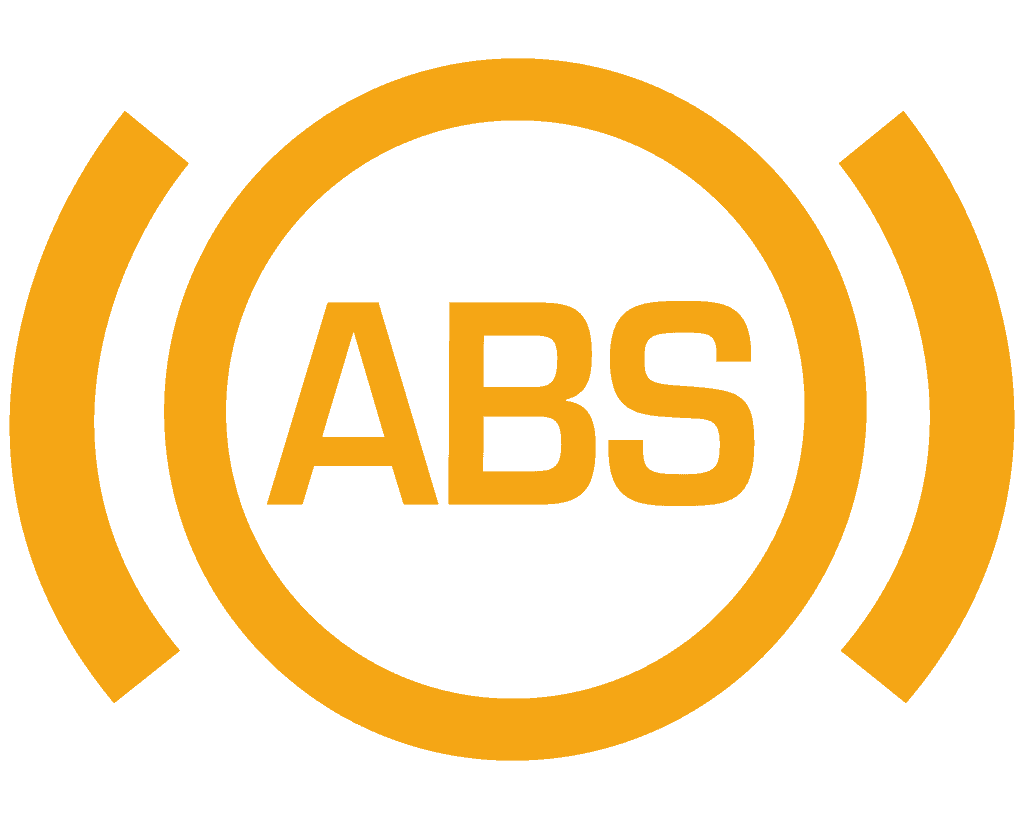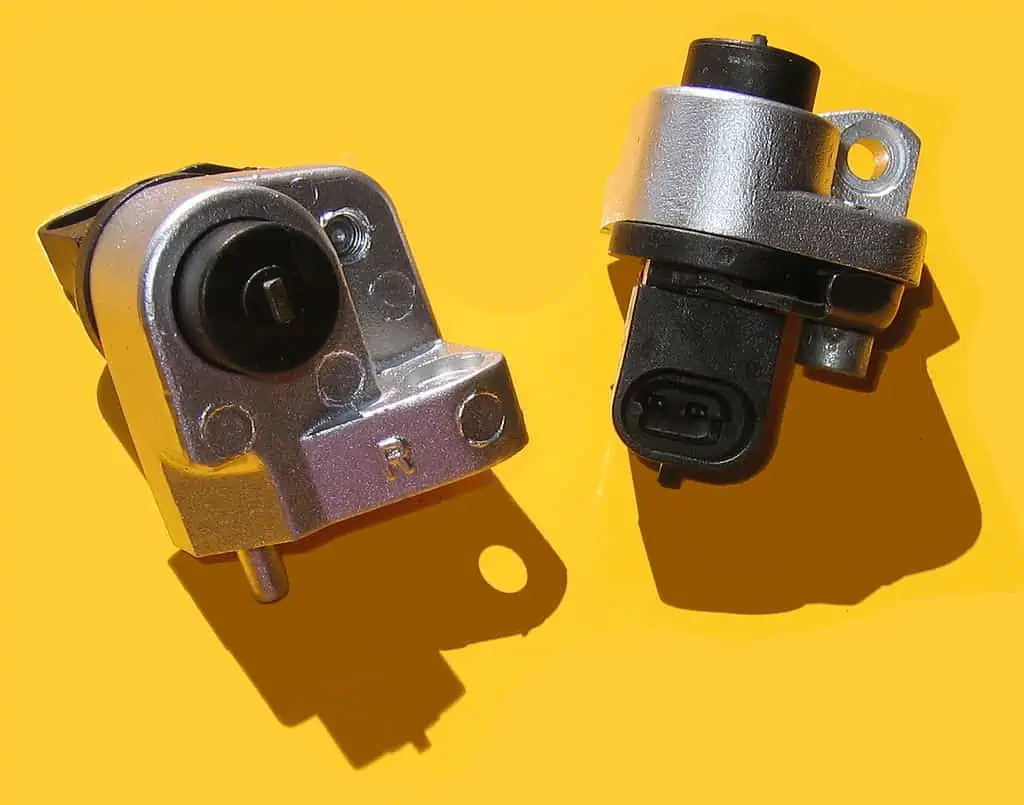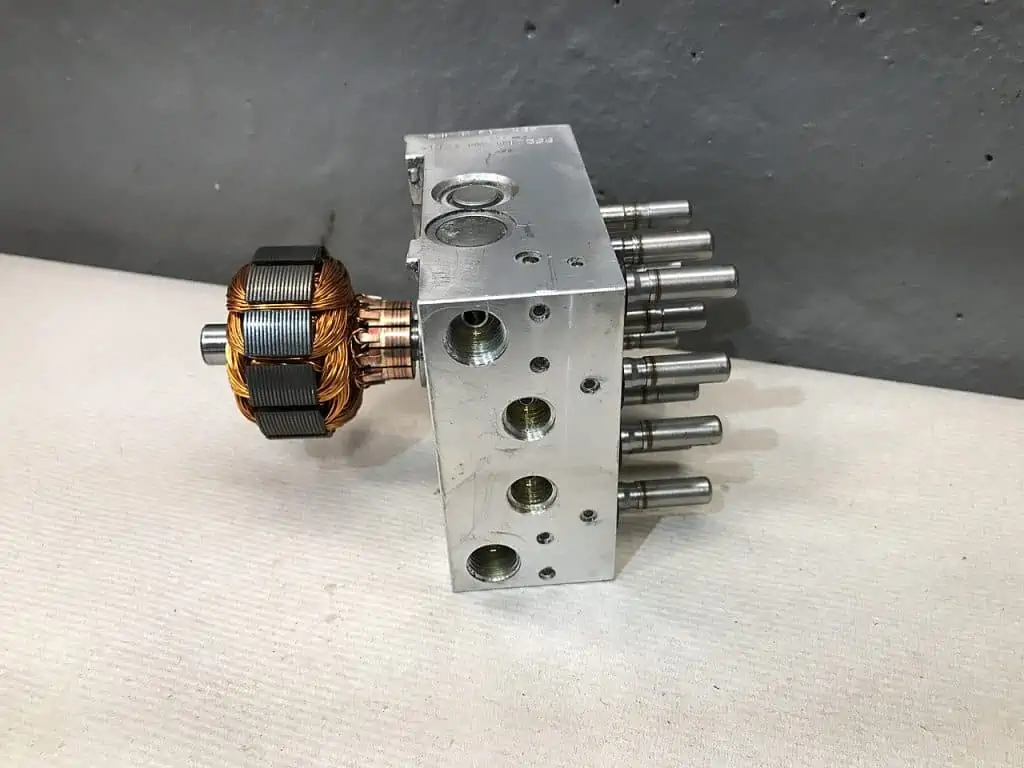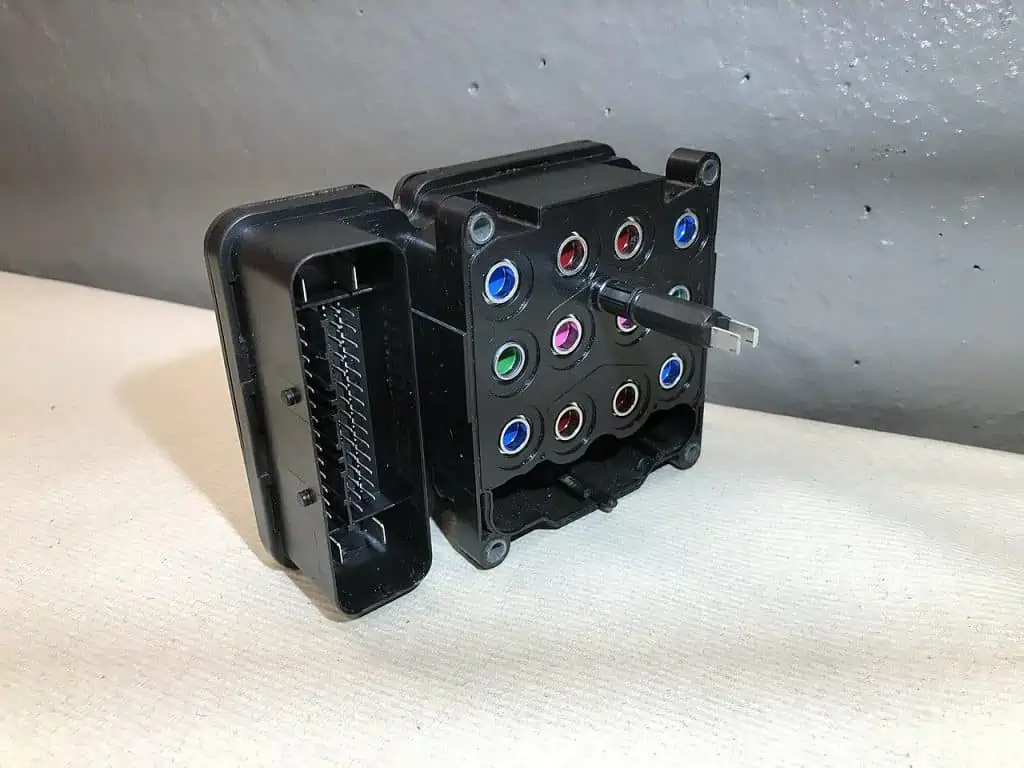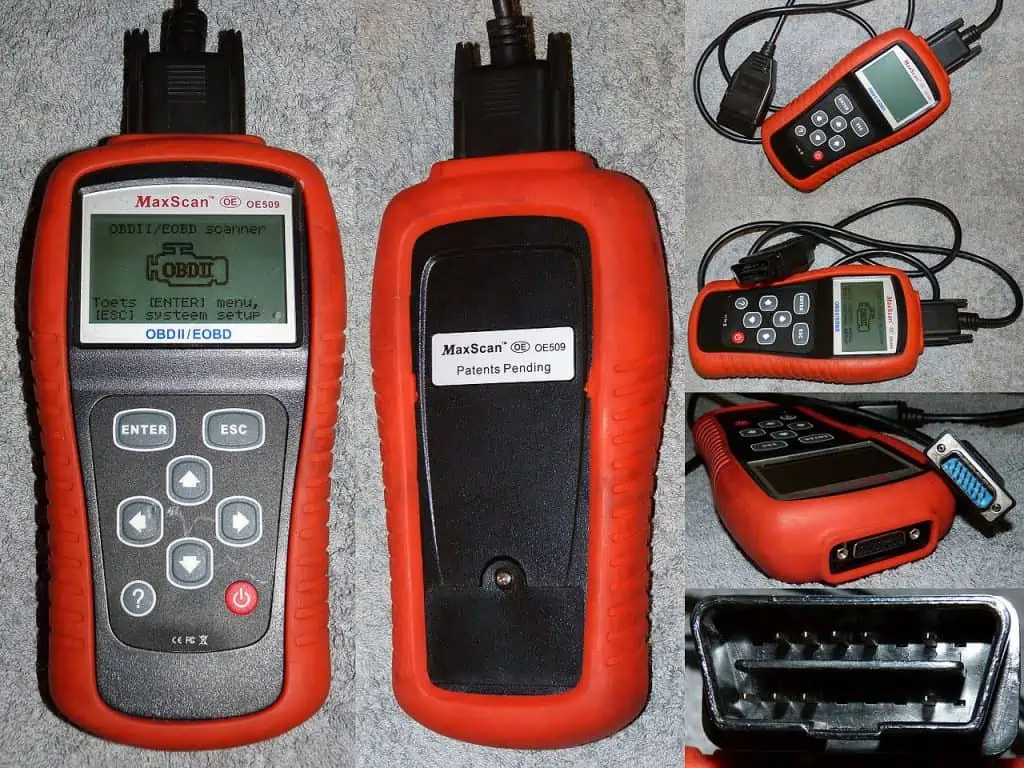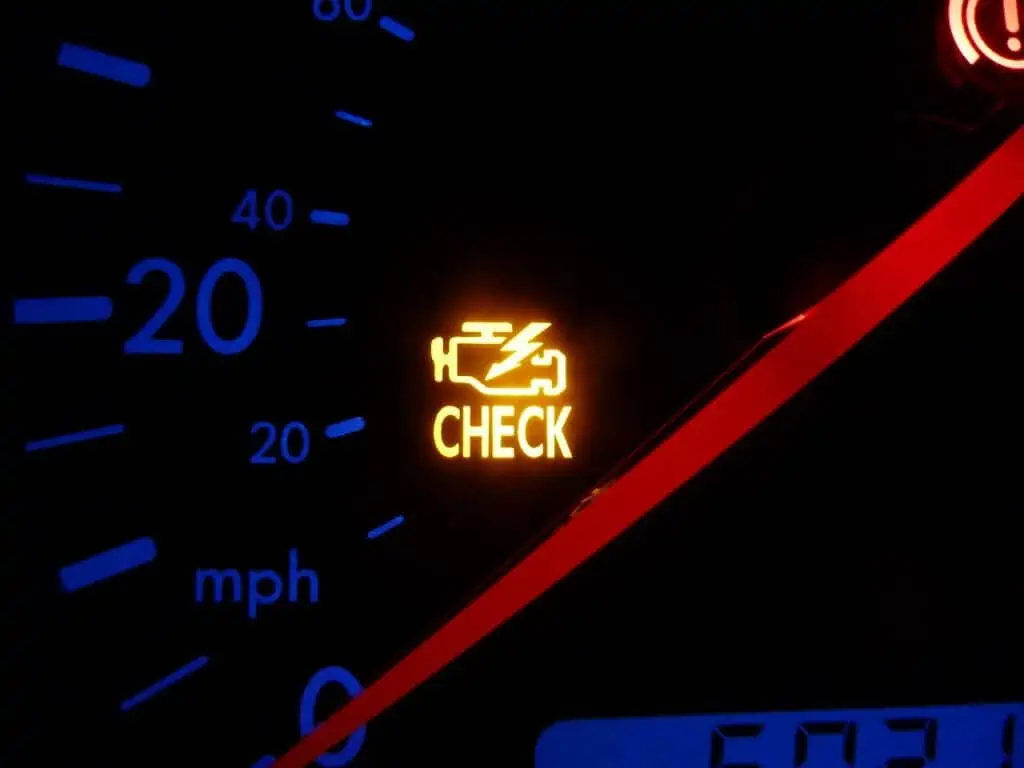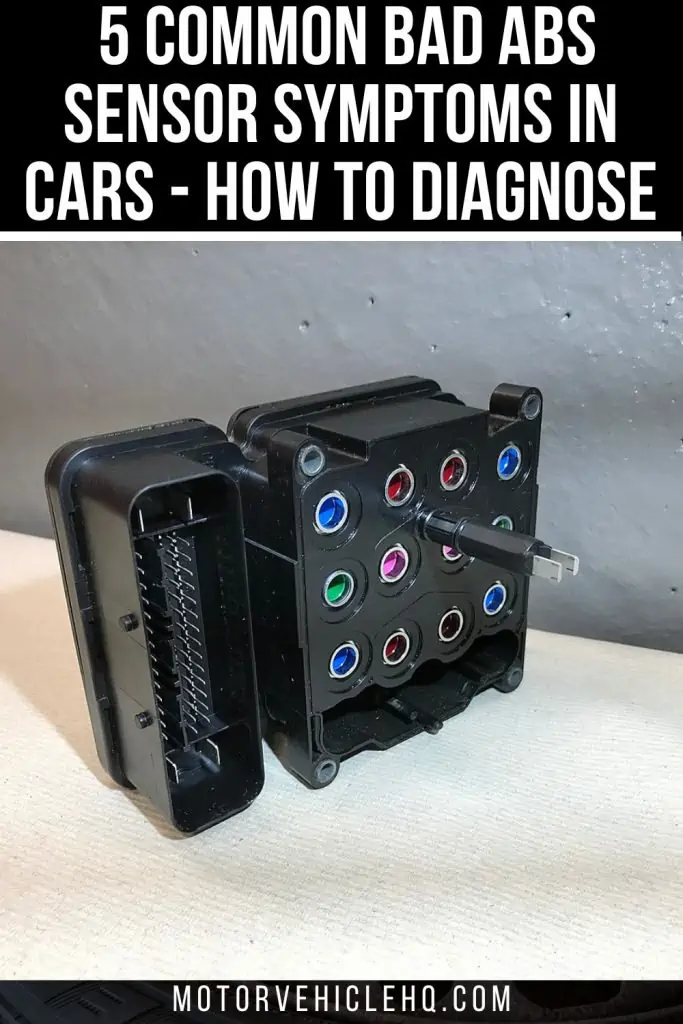Have you seen any strange symptoms on your vehicle, such as the ABS light staying on all the time or any other strange behaviors from the ABS? In this situation, the ABS sensor may malfunction. However, you’ve come to the perfect spot because this subject will require a lot of discussions, and we’ll break it all down into manageable chunks.
It might be tough to cope with a situation like this. How come I’m saying this? This is true since an erroneous sensor will also result in an erroneous ABS. And when you need to perform an emergency brake, this mechanism might be the difference between life and death.
These methods were developed and granted patents for this reason. They assist you in stopping on time and aid save many lives. Who knows how many individuals are still alive today as a result of these advancements in automotive safety? Because of this, you must constantly ensure that this system is flawlessly functional and error-free. And we’re going to support you there.
We will first discover what ABS is and how it functions. Next, we’ll talk about how the ABS wheel speed sensor works. Next, we’ll discuss the location and signs of a faulty ABS sensor.
Finally, we will consider the price of replacing the ABS sensor. So, if you’re interested in learning more about this issue, please continue reading.
The ABS System: What Is It?
Before we continue, let’s briefly discuss the ABS wheel speed sensor’s placement. Let’s first examine what the ABS is in general. Solving this issue with your car will be much simpler if you understand what this system is and how it operates. You may skip forward to the symptoms if you’d like, but if not, stick around for a while.
The ABS is a basic anti-lock braking system. Using this technique prevents the wheels from locking up and sends the car into a skid. When the car slips, the tire will become damaged and acquire flat spots.
An anti-lock braking system is all that the ABS is. This method, then, guards against the wheels locking up and sending the vehicle into a skid. The tire will be destroyed and develop flat areas when the vehicle slides.
So, in addition to serving as a safety system, this device also monitors the condition of your tire. But how exactly does this mechanism operate?
It’s a fairly easy system, I suppose. The control module is the system’s main processing unit. To make the vehicle stop without sliding, the hydraulic pump, which is attached to the control module, pulses hydraulic fluid into the calipers.
indicating that only brief durations of intermittent hydraulic fluid pressure are supplied to the brakes. You stop the tires from skidding by using the brakes in this manner.
The vehicle stops using this technique at the closest feasible distance, which is crucial. Unlike without this technology, where it can stop a lot later than anticipated and perhaps cause the vehicle to crash. The pump and controller, however, are not the only parts of this system.
The ABS wheel speed sensor is yet another crucial component of the jigsaw. And we’ll talk about that in more detail in the chapter after this.
How Does the ABS Sensor Function In a Car?
The ABS wheel speed sensor is the crucial component that we have reached at this point. What does ABS sensor mean? The sensor’s name makes clear what it is used for.
This sensor measures the vehicle’s speed, just as you may have guessed. Your vehicle has four-speed sensors that gauge the speed. A sensor for every wheel.
On the knuckle, they are mounted. They then gauge the wheel’s speed from there. But without a component attached to the wheel hub assembly known as a tone ring, this would not be feasible.
The element that the sensor is viewing is this tone ring. Each of the grooves on the tone ring is measured as the wheel revolves. Each of the rings has several of these grooves, which provide precise speed readings.
The anti-lock braking system will malfunction if the tone ring is damaged, and the dash light will come on. For this reason, if you don’t want to have issues, these rings need to be in excellent condition.
Sometimes they must decide what to do rather than the sensor. Because the tone rings may get rusted or clogged with debris, you should also examine them. All of this will make it unable to perform its usual duties.
However, the ABS wheel speed sensor is a pretty inexpensive and accessible part that you may quickly replace. You can get it at any parts store. We’ll go into the specifics of how you can achieve this later on. Now let’s study more about the ABS sensor position and discover where it is situated on the vehicle.
Where Is the ABS Sensor Located In a Car?
Since we just discussed the ABS wheel speed sensor, let’s move on to the ABS sensor position and see where these sensors are often found in vehicles. You can locate the sensor and replace it with the use of this knowledge.
The ABS speed sensors for cars by Hans Haase / CC BY-SA 4.0. You can still drive safely with a bad ABS sensor, however, it depends on the route. If you’re traveling on dry roads at a moderate speed, an inoperative ABS won’t adversely affect your driving experience.
Each vehicle has a total of 4 sensors, as we already said. A sensor for every wheel. The sensors are expertly positioned on the wheel’s back side.
Unfortunately, you cannot spin the wheel assembly at the back; thus, you must approach from below or perform this task while wearing a blindfold, depending solely on your sense of touch to locate and remove the sensor’s bolts.
Examining the tone ring’s condition is another thing you might want to perform anytime you remove the sensor. Check to see if it is in excellent shape. Debris or rust areas might prevent the component from working correctly. But what signs indicate a malfunctioning ABS sensor? Well, that is what we will discuss next.
Which are the Common Bad ABS Sensor Symptoms In a Car?
Now that we have discussed the fundamentals of this system and its constituent parts, namely the sensors. Now let’s concentrate on a few more factors.
And they are signs of a malfunctioning ABS sensor. What signs should you look for if this sensor is malfunctioning and broken? Let’s expand.
1. The ABS Sensor Light Comes On
The ABS sensor light, which frequently illuminates on the dash once this component is failing, is the first on our list of bad ABS sensor symptoms that we are going to explore.
However, you shouldn’t take this for granted and assume without doing the necessary diagnostics using an OBD2 scanning tool that the issue is with the sensor.
The tone ring, controller, and hydraulic pump are other parts of this system. This light can also be activated by any of these parts. So, take caution.
Get a hold of one of these scanners and check the types of codes you are receiving before you leap to any conclusions. Especially if some of them point to sensor-related issues. So you are aware of where to seek solutions.
Make careful to verify any additional components for faults and fix them as necessary. Let’s move on to the following symptom now.
2. The Speedometer Malfunctions
The failure of the speedometer is the second on our list of bad ABS sensor symptoms. The ABS sensor is also known as a speed sensor, as you can guess.
This indicates that the speed of the vehicle is being measured by this sensor. You’ll likely notice erroneous speedometer readings when the sensor isn’t working properly, or the component may entirely stop working and stop displaying any speed.
Additionally, the car’s mileage won’t be calculated; instead, it will remain static and unchanging. These signs are a dead giveaway that you have an issue with the speed sensor and this problem requires fixing. But how can you identify a faulty sensor? That will be covered in more detail later in the text.
3. The ABS System Fails to Activate (Brakes Locking Up)
The third on our list of bad ABS sensor symptoms is a system that doesn’t engage. This is an anti-lock brake system, as you are surely aware. In other words, it keeps the brakes from locking up.
whenever one of the components malfunctions and the light comes on. It implies that this mechanism won’t activate when necessary, causing the brakes to lock up while applying forceful braking.
An ABS hydraulic control unit by Samf4u / CC BY-SA 4.0. An ABS that is functioning properly will reduce any traction loss, especially in slick and rainy driving situations. If you experience tire sliding or traction loss while driving on snowy or slick roads for longer than a small amount of time while stopping or resuming, the ABS may not be functioning properly.
The wheels may develop flat areas as a result of this. But even worse, you might lose a lot of money in this risky circumstance.
Imagine slamming on the brakes in response to a person crossing in front of your vehicle; however, the brakes lock up, causing you to slide along with the vehicle. This is detrimental to both you and those around you. You run the risk of hurting both yourself and a passing pedestrian.
Therefore, anytime there is a defective speed sensor, it implies that the system is not functioning properly, and this problem has to be resolved as soon as possible.
4. Less Stability When Driving In Ice or Wet Conditions
Most drivers eventually become used to how their car responds to various situations, even slippery ones like driving on wet or snowy roads.
Any traction loss will be minimized by an ABS that is working correctly, especially in slippery and wet driving conditions. The ABS might not be working properly if you suffer tire skidding or traction loss while driving on snowy or wet roads for more than a brief period when stopping or starting.
This is often brought on by either a module issue or, more commonly, a sensor issue.
Have the vehicle evaluated by a qualified technician, if your ABS Light illuminates or if you believe you may be experiencing a problem with one or more of your car’s ABS sensors. This will help you discover the precise nature of the issue and whether any repairs are necessary. If necessary, they will also be able to replace your ABS sensors.
5. Pulsing Brake Pedal During Hard Braking
A further sign of a malfunctioning ABS sensor is a pulsing brake pedal. Its vehicle may deceive your ABS control module into engaging even with the tiniest pressure you apply to the brake pedal if one or more speed sensors have failed.
The traction control and the anti-brake lock system will start working right away. bringing the vehicle to a complete stop with no rhyme or reason. As a result, when you press your foot on the brakes, you will get that pulsing sensation.
When these systems are turned on, additional noises will be made by the rotors themselves. Which, in practice, sounds awful. You’ll believe that nothing is going well. However, it’s not always the case. The key is to take notice of this behavior and address the issue appropriately in a nearby store. But can you resolve this issue on your own?
We’ll explain exactly where to learn how to identify the problem fast and accurately in the chapters that follow.
What Causes ABS Sensors to Fail?
One of the dash lights that frequently illuminates at increasing mileage is the ABS light, which is quickly followed by the dreaded Check Engine light. Dealerships are aware that a car cannot be sold with any of them lit.
Owners are aware that turning them off typically entails spending a lot of money or spending considerable time in the garage. Here are three places to start when diagnosing an ABS that will properly take you to locate the issue and resolve it correctly the first time.
1. Damaged ABS Sensor Wires
The ABS Electronic control module by Samf4u / CC BY-SA 4.0. A pulsating brake pedal is a symptom that the ABS sensor is broken. If one or more speed sensors fail, its automobile may trick your ABS control module into activating even with the little pressure you put on the brake pedal.
Since cars are supposed to be driven, many owners operate them year-round. The ABS sensor wire is the most delicate component in this location since road hazards including ice chunks, boulders, and construction debris will enter a vehicle’s wheel well at least a few times every year.
When evaluating the system, look for slits in the ABS sensor’s jacket or bright bare copper visible along the cable.
2. Worn Out Wheel Bearing
Although it isn’t frequently thought of as an ABS component, a broken wheel bearing will cause the system to enter error mode. An ABS speed sensor code will probably be logged if a wheel bearing is severely worn to the point that the wheel can wobble around its axis. Why?
In front-wheel and all-wheel drive vehicles, tone rings (or reluctor rings, depending on the vehicle) are frequently fitted to the axle shaft. If the wheel speed sensor is attached to the vehicle’s hub, it is set apart from the rotating ring on the axle by a certain amount.
The axle and the ring will shake, changing this specification and causing the speed sensor to display brief periods of no indication when the wheel bearing has catastrophically failed. In severe circumstances, the wheel speed sensor may come into contact with the axle, rendering it useless.
3. A Faulty ABS Sensor Module
The primary brain of the ABS is the ABS module. It is capable of separately modulating the braking pressure at each of the four wheels during a panic stop, gets speed indications from each ABS sensor, and detects when the brake pedal is pushed. There is some complication associated with this cunning talent. An ABS module’s circuit board is crammed full of parts and pins from all of the sensor inputs.
The ABS module’s internals expands and contracts as a result of the intense heat and cold in the engine compartment of a car, occasionally resulting in the cracking and disconnection of crucial electrical solder connections. Consider the ABS module if the ABS as a whole appears to be functioning properly but there is a defective wheel speed sensor or an ABS pump error code.
4. Debris Penetrating the ABS System
The ABS sensor may eventually stop working as a result of exposure to dirt and other contaminants on the road. For optimum operation, it is essential to clean and verify the sensors at the intervals recommended in the user manuals. The ABS or traction control light on your car’s dashboard turning on is one of the most visible symptoms of a damaged ABS sensor.
When driving on icy roads, a malfunctioning wheel speed sensor might potentially result in a considerable loss of grip.
How Do You Diagnose Bad ABS Sensor Symptoms?
Now that we’ve understood the fundamentals of this sensor and the signs of a faulty ABS sensor. Now that we have covered the basics, let’s learn more about how to troubleshoot an ABS sensor. How can you accomplish this and perform accurate auto diagnostics?
In all honesty, this kind of labor is quite simple. Speed sensors are inexpensive and simple to diagnose, contrary to what you might think.
An OBD2 scanner tool will be your primary requirement for this task. You may use this program to scan the vehicle for codes and find out more about the issues your car is having.
The front ABS sensor of a BMW by NSX-Racer / CC BY-SA 2.5. The ABS wheel speed sensors in luxury vehicles are typically more expensive, and some models may be more difficult to fix, which raises labor expenses.
If certain signals point to a malfunctioning speed sensor, you know where to focus your investigation. You may also find out exactly what the issue is with your sensor from the code. Whether the sensor itself is at fault or the circuit.
However, false positives can occasionally occur, therefore it’s crucial to remove all of the faults before scanning the vehicle once more to check for them. If they do, you are aware that there is an issue with a particular sensor.
Grab a multimeter tool, which is the next thing you’ll need to do. You may check the resistance and voltage with this multimeter equipment to determine if the sensor is fully functional or not.
For this exercise, head to YouTube, select a tutorial video and watch it to see how it is done properly. The replacement of the ABS sensor is the next significant issue we’ll discuss.
Consider taking the following actions to determine the cause of any bad ABS sensor symptoms:
- Connect a diagnostic tool, note the error codes, and examine the ABS sensor’s live data parameters.
- Measure the sensor connection to test the complete line between the control unit and the sensor. Use an oscilloscope and a multimeter to verify the supply voltages and signals.
- Check the sensors’ connections and wiring for evidence of damage or contamination and to make sure they are properly installed and secured.
- Inspect the impulse ring and sensor for damage.
- If dirt is present, use a wire brush to clean the contact surface.
Typical error codes and their causes include:
- C0060: Incorrect operation of the left front ABS solenoid circuit.
- C0065: Malfunction in the left front ABS solenoid 2 circuit.
- C0070: Incorrect operation of the right front ABS solenoid circuit.
- C0075: A problem with the right front ABS solenoid 2 circuits.
- C0080: Failure of the left rear ABS solenoid 1 circuit.
- C0085: Malfunction in the left rear ABS solenoid 2 circuits.
- C0090: Incorrect operation of the right rear ABS solenoid circuit.
- C0095: Failure of the right rear ABS solenoid 2 circuits.
Replacement of the ABS Sensor
Let’s now imagine that you have identified a faulty ABS sensor and are looking at how to repair it. The procedure for replacing the ABS sensor.
The solution is also quite straightforward. Any novice may build this sensor themselves. You must accurately diagnose the issue and identify the problematic sensor. In the last chapter, we described how to go about doing that.
It is possible to connect an OBD 2 diagnostic scanning tool, record the fault codes, and check the ABS sensor’s real-time data characteristics. From there, you can quickly determine the primary reason for ABS sensor failure.
To learn how to troubleshoot a malfunctioning sensor, find a YouTube tutorial and follow along until the replacement procedure is complete. Anyone can replace something since it is so simple to accomplish. The first step is to remove the wheel from which the ABS sensor is mounted.
Then, you will need to remove the two bolts that are typically used to secure this sensor. The sensor will just pop out after being removed, allowing you to take it out.
The connector must then be removed from the other side and plugged with the new sensor. After that, secure the replacement part in place.
Last but not least, ensure the auto computer is error-free and that there are no issues before turning off the brake lights. You will then be ready to leave. You won’t have any more issues. But have you considered how much this component will cost? That’s what we’ll see next, I suppose.
How Can You Change a Bad ABS Sensor?
Follow these easy procedures for a best practice sensor replacement after determining that the ABS sensor is at fault:
- To begin, before jacking up the vehicle, release the wheel nuts (do not remove wheel nuts yet). For the proper jacking points, refer to your owner’s handbook, and make sure the car is elevated and supported firmly.
- To reach the braking system, remove the wheels and position yourself to the side.
- To inspect and access the ABS sensor, you might also need to remove the braking discs and pads. To learn best practices for doing this, you can head to YouTube for tutorials.
- Once accessible, take off the bolt holding the sensor to the hub and the clamps holding the sensor wiring to the chassis/body of the car.
- Afterward, disconnect the sensor.
- Use an emery cloth to scrub the vicinity of the sensor.
- It’s now time to install the new ABS sensor, working in reverse order. Connect the sensor first, and then route the harness such that it is fastened to the body or chassis. After that, put it into the hub.
- If necessary, replace the pads and discs and torque them to the proper values.
- The wheels should be put back on, secured, and lowered to the ground.
- The wheels are then torque-tightened to the manufacturer’s requirements.
- Re-connect the diagnostic tool, then erase any error codes (s). Recheck for any new error codes after starting the engine. Turn off the ignition and exit the diagnostic program.
- Finally, make sure the check engine light is off before doing a road test.
What Is the Cost of an ABS Sensor?
What will the ABS sensor cost, then? This sensor is roughly $50 in price. Even at $40, you may occasionally discover discounts. If you want to replace it, it is not very expensive, and you won’t notice it in your wallet.
They may even reach $100 for certain more premium vehicles. Just to be clear about this. Not all vehicles are created equal, and some have more expensive parts.
The ”Check Engine Light” by Wikiuser100000 / CC BY-SA 3.0. The ABS light, which is one of the dash lights that usually glows at higher mileage, is followed immediately by the dreaded Check Engine light. The fact that a car cannot be sold with any of them illuminated is known to dealerships.
How Much Does an ABS Sensor Replacement Cost?
And how much does it cost to repair an ABS sensor? So, replacing a sensor typically costs around $200. $150 in labor and $50 for the component.
Although there are several locations where you may find better offers than this, this is the standard price. For this reason, it might occasionally be preferable to simply replace it yourself and go on.
Luxury cars frequently include more expensive ABS wheel speed sensors, and some types might be more difficult to repair, which drives up labor costs.
With a few tools, you can easily replace the ABS wheel speed sensor on your own. This can be a project worth taking on in your garage if you have some basic mechanical expertise. However, they might get trapped after a time, so you might need a heat source to get them out.
Is It Safe to Drive with Bad ABS Sensor Symptoms?
With a defective ABS sensor, you can still drive safely, but it depends on the road. Your driving experience won’t be significantly impacted by a non-working ABS if you’re traveling at a reasonable pace on dry roads.
On the other side, driving without a functioning ABS might put you in a much larger danger of getting into an accident if it’s in the midst of winter and there is a lot of slush and ice on the roads.
Simply said, a malfunctioning ABS sensor won’t fully impair your car’s ability to be driven, but it might make it much riskier to do so in circumstances where you might not have perfect traction. If one of your ABS sensors does turn out to be malfunctioning, you should get it replaced as soon as you can.
The Conclusion
We have spoken about the ABS sensor quite a bit in this essay. First, we studied the practical operation and importance of the anti-lock braking system.
The signs of a defective speed sensor have also been discussed. As we recall, these symptoms include the cluster light, the anti-lock braking system activating unexpectedly, and inaccurate speedometer readings.
Then, we spoke about how to diagnose the problem and bench test the sensor to determine its quality using just a piece of basic OBD2 scanner equipment and a multimeter.
Finally, we discovered the expenses associated with solving this issue. both for the labor and the components. And to be quite honest, this is among the easiest and least expensive projects you could DIY at home.
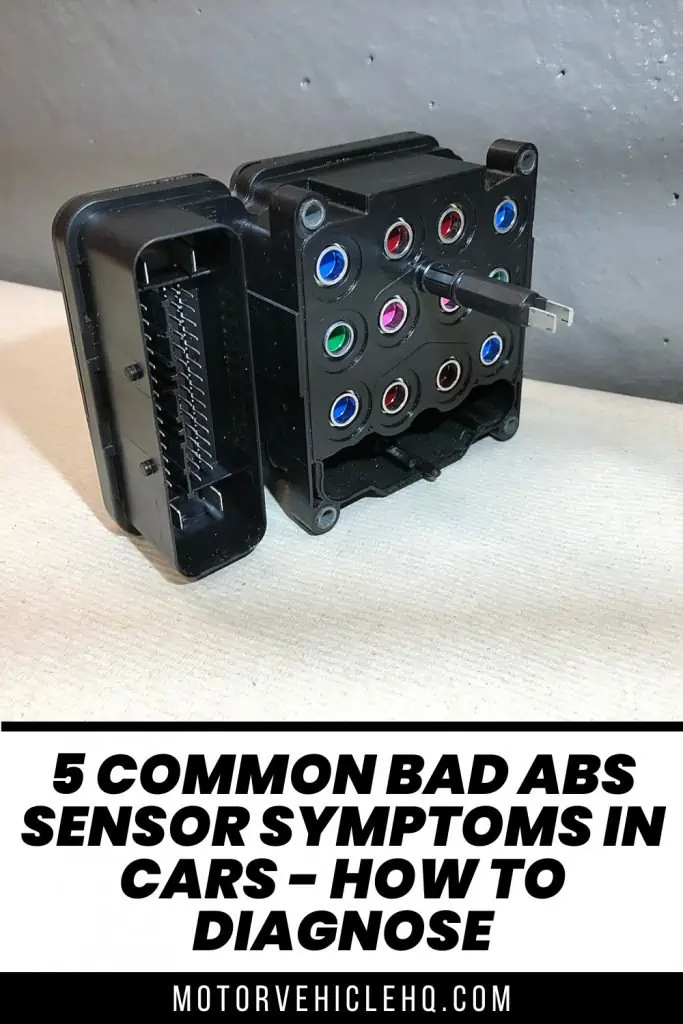
The ABS Electronic control module by Samf4u / CC BY-SA 4.0.

Jim Wicks is the founder of MotorVehicleHQ. With over two decades of experience in the automotive industry and a degree in Automotive Technology, Jim is a certified car expert who has worked in various roles ranging from a mechanic, car dealership manager, to a racing car driver. He has owned more than 20 cars over the past 15 years. Ask him about any vehicle you see on the road and he can tell you the make, model and year. He loves the aesthetics of all things cars, and keeps his vehicles in pristine condition.
In his free time, Jim enjoys getting his hands dirty under the hood of a classic car or taking long drives along the country roads. His favorite car? A 1967 Shelby GT500, a true classic that, according to Jim, “represents the pure essence of American muscle.”
